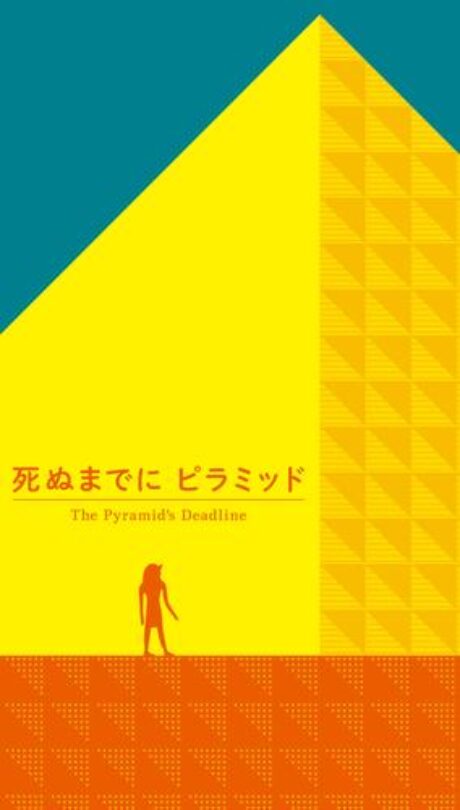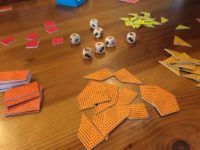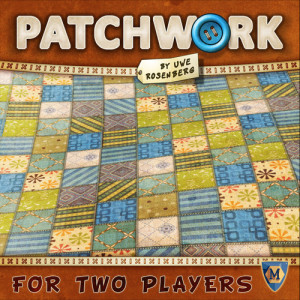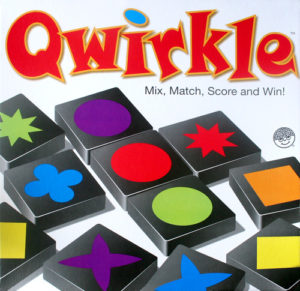- Learning time
- minutes
- First play time
- 20 minutes
The Pyramid´s Deadline
Designed by: Jun Sasaki
In The Pyramid’s Deadline you are competing to complete your pyramid ‘the best’ and have it chosen as the tomb of the pharaoh when he finally dies.
But the theme is pretty much secondary here – this is an abstract game that combines tactical play with pattern-forming and luck-pushing.
The pyramid pieces – making up parts of a grid – are sorted into shapes and placed centrally. Each player starts with a base to their pyramid (a rectangle) and on each turn dice are rolled. The dice show what pyramid shapes are available, and players take a matching piece, in turn, until only one die is left, before a new round begins. When you take a piece, you must add it to your pyramid (either on top, or at the side) following some basic rules. Lines on each piece must be horizontal or vertical, and you can’t have anything overhanging an edge. Corners must meet with corners.
Some pieces have a triangular shape (or aspect) but one of the available pieces is a simple square – a capstone – and whenever the last capstone is taken, the pharaoh dies and that is the final turn of the game! Players now calculate points by simply multiplying the width of their pyramid grid by the height. But! You now deduct a point for every ‘pointy’ bit on your pyramid, and you cannot have any flat areas (horizontally) above the bottom level of your pyramid at all, or you score no points!
Which means leaving any area flat is a risk, because if the capstones run out you’re done for in terms of getting any attention from the pharaoh. Most points: wins!
The guru's verdict
-
Take That!
Take That!
You can be hit by opponents taking capstones when they can see you have flat areas in 'illegal' spaces, but apart from that any Take That element in the game comes from the dice.
-
Fidget Factor!
Fidget Factor!
Very low.
-
Brain Burn!
Brain Burn!
It's light on the rules (albeit a little fiddly on the placement and scoring) so the brain-burning here is of the pattern-forming variety.
-
Again Again!
Again Again!
You can play different ways - slow and steady, or racing to end the game and put pressure on your opponents - and the dice ensure some randomness.











Sam says
The rules are a little bit fiddly, but a couple of plays and you get the idea. After that it's down to whether you like the balance of luck-pushing and pattern-forming - it's a surprisingly quiet game, for a luck-pusher! - or if you want something a with a bit more whizz-bang in it. I can see it's not everyones idea of a fun time, and certainly publisher Oink! have produced more impressive things out of small packages (Deep Sea Adventure to name one) but I rather enjoyed my plays of The Pyramid's Deadline.